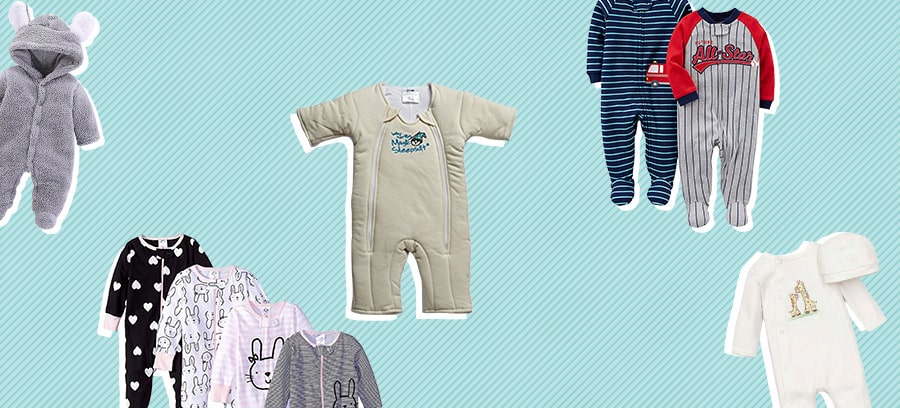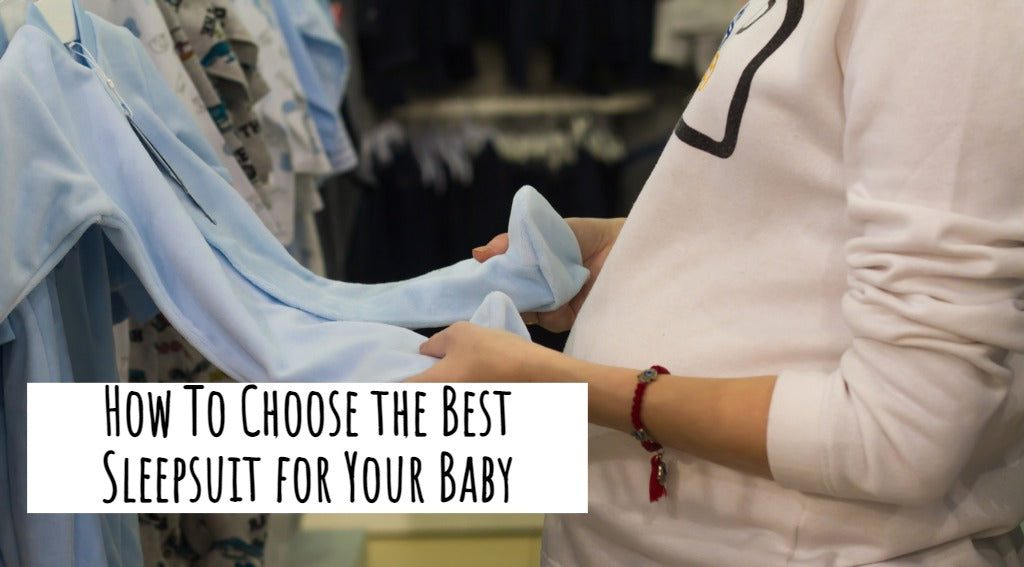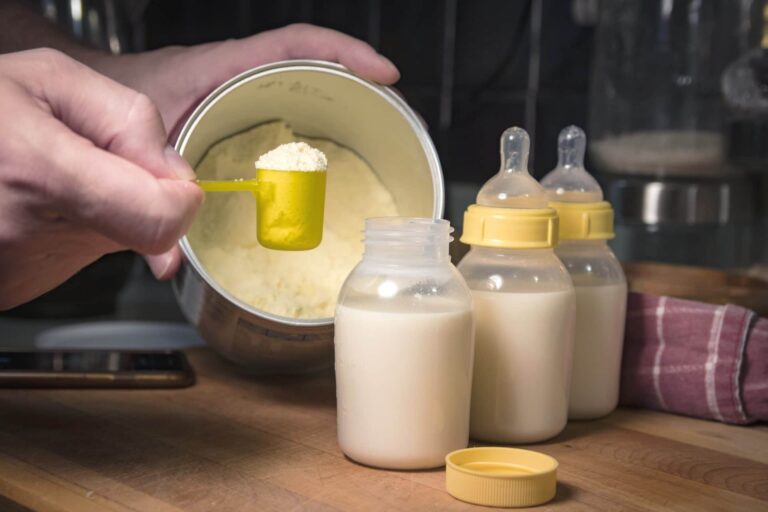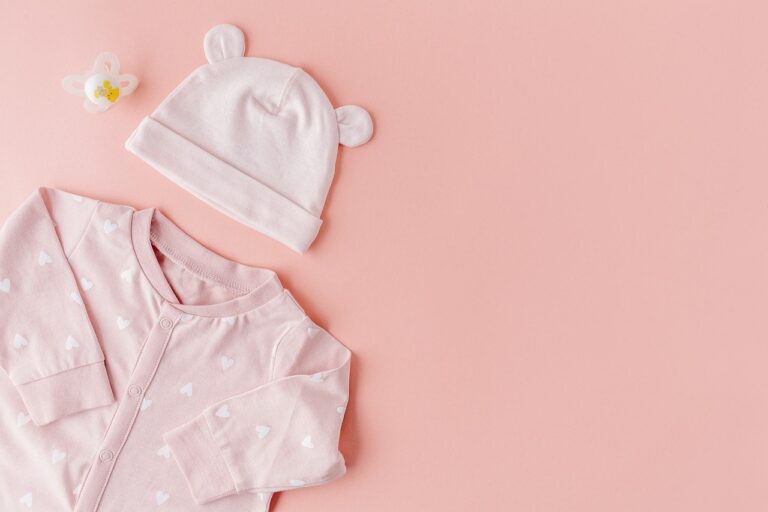How Many Sleepsuits Does a Newborn Need? Ultimate Guide
A newborn typically needs four to six sleepsuits for sleepwear.
1. Understanding The Sleepwear Needs Of Newborns
Understanding the sleepwear needs of newborns is important for new parents. Typically, having four to six sleepsuits is enough to ensure that there is always a clean and dry option available for bedtime. It’s not necessary to have a lot of sleepwear, as babies grow quickly.
When it comes to newborns, choosing the right sleepwear is of utmost importance. Not only does it keep them comfortable and snug during their sleep, but it also ensures their safety and well-being. But how many sleepsuits does a newborn actually need? Let’s explore the factors to consider when determining the number of sleepsuits needed for your little one.
Importance Of Choosing The Right Sleepwear For Newborns
Choosing the right sleepwear for newborns is crucial for several reasons. Firstly, newborns have sensitive skin and require clothing that is soft, breathable, and gentle on their delicate bodies. Secondly, sleepwear that fits properly ensures that the baby can move comfortably without any restrictions, promoting healthy growth and development. Lastly, the right sleepwear helps regulate the baby’s body temperature, keeping them warm when it’s cold and cool when it’s hot.
Factors To Consider When Determining The Number Of Sleepsuits Needed
Several factors come into play when determining the appropriate number of sleepsuits needed for your newborn. Here are some factors you should consider:
- Growth rate: Babies grow at a rapid pace during the first few months. It is important to keep this in mind when deciding how many sleepsuits to purchase. A good rule of thumb is to have 4 to 6 sleepsuits on hand, as this will ensure you always have a clean and dry option available for your baby.
- Frequency of laundry: Newborns go through a lot of clothing, which means frequent laundry. Having a sufficient number of sleepsuits will prevent you from constantly rushing to do laundry or running out of clean sleepwear.
- Seasonal variations: The number of sleepsuits needed may vary depending on the season. During colder months, you may need additional layers or thicker sleepsuits to keep your baby warm and cozy. Consider the climate and temperature of your region when determining the number of sleepsuits to have.
- Preference for other sleepwear options: Some parents may prefer using sleeping bags or swaddles instead of sleepsuits. In such cases, the number of sleepsuits needed may be reduced. However, it is always good to have a few sleepsuits as a backup option.
Ensuring that your newborn has an adequate number of sleepsuits is essential for their comfort, safety, and overall well-being. By considering factors such as growth rate, laundry frequency, seasonal variations, and personal preferences, you can determine the right number of sleepsuits to have on hand. Remember, it’s always better to have a few extra sleepsuits than to run out when you need them the most. Happy parenting!
2. Optimal Number Of Sleepsuits For Newborns
When welcoming a newborn into the family, many new parents wonder how many sleepsuits their little one will need. Finding the right balance between having enough sleepsuits and not going overboard can be a challenge. In this section, we will explore the recommendations from experts on the number of sleepsuits required for a newborn, as well as the practicality of having multiple sleepsuits.
Recommendations From Experts On The Number Of Sleepsuits Required
Experts suggest that having four to six sleepsuits is usually enough to ensure that your little one always has a clean and dry outfit when it is time for sleep. Due to how quickly babies grow, it is not necessary to have an excessive amount of sleepsuits. By having a small collection of sleepsuits, you can easily rotate them and keep up with your baby’s changing needs.
Keeping a few extras on hand can be beneficial, especially during those early days when accidents and spills are more common. It’s also a good idea to have a spare sleepsuit in your diaper bag for any unexpected situations that may arise outside of the house.
Having multiple sleepsuits for your newborn can be practical for a few reasons. Firstly, babies can have multiple feedings and diaper changes throughout the day, which can result in accidents or spitting up. Having extra sleepsuits ensures that your baby always has a fresh, clean outfit to wear.
In addition, newborns have sensitive skin, and using a different sleepsuit each day can help prevent any skin irritations that may occur from prolonged use of the same garment. By keeping a small collection of sleepsuits, you can alternate between them and give your baby’s skin some breathing room.
However, it’s important to strike a balance between having variety and excess. While it can be tempting to buy every adorable sleepsuit you come across, it’s essential to keep in mind that babies outgrow their clothes quickly. Instead of investing in a large number of sleepsuits, consider investing in high-quality, comfortable options that will last longer and provide your baby with ample comfort.
In conclusion, having four to six sleepsuits is generally considered an optimal number for newborns. This allows for rotation, practicality, and variety while also preventing excessive accumulation of clothes. By following these recommendations, you can ensure that your little one has a cozy and clean sleepsuit for a good night’s sleep.
3. Additional Factors To Consider
When considering how many sleepsuits a newborn needs, it’s important to keep in mind that babies grow quickly. Usually, having four to six pieces of sleepwear is enough to ensure cleanliness and dryness at bedtime. Avoid over-stocking to accommodate their rapid growth.
When it comes to determining the number of sleepsuits a newborn needs, there are a few additional factors to consider. These factors can greatly impact the sleepwear requirements for your little one, ensuring they are comfortable and cozy throughout the day and night.
Climate And Seasonal Variations
One important factor to consider is the climate and seasonal variations in your area. Babies are sensitive to temperature changes, so it’s essential to dress them in appropriate sleepwear. In colder climates or during winter months, you may need to dress your newborn in warmer sleepsuits or consider using a sleeping bag to provide extra insulation. On the other hand, in warmer climates or during summer, lightweight and breathable sleepsuits are more suitable to keep your baby cool and comfortable while they sleep. Adjusting the sleepwear according to the climate will ensure your newborn remains at an optimal temperature, promoting better sleep and overall well-being.
The Impact On Sleepwear Requirements:
- In colder climates or during winter months, opt for warm sleepsuits or use a sleeping bag for added insulation.
- In warmer climates or during summer, choose lightweight and breathable sleepsuits to keep your baby cool.
Frequency Of Laundry And Availability Of Clean Sleepwear
Another factor to consider is the frequency of laundry and the availability of clean sleepwear. Babies can be messy, and their sleepwear may need to be changed frequently due to spit-ups, diaper leaks, or other accidents. Having enough sleepsuits on hand ensures that you always have a clean and dry one when it’s time to get your baby ready for sleep. Consider the number of times you do laundry and how quickly you can have sleepwear ready for use when determining the quantity of sleepsuits you need.
Pros And Cons Of Using Sleep Gowns For Newborns
Sleep gowns are a popular choice for newborn sleepwear due to their convenience and easy diaper changing access. However, there are pros and cons to consider before deciding on sleep gowns for your baby:
| Pros | Cons |
| Convenient for diaper changes without fully undressing the baby | May cause the baby’s feet to become cold |
| Easy to put on and take off | Less coverage compared to sleepsuits |
| Can make nighttime diaper changes less disruptive | May ride up and become uncomfortable for the baby |
Understanding the pros and cons of using sleep gowns can help you make an informed decision based on your baby’s needs and your personal preferences. It’s always a good idea to try a few options and see what works best for your newborn.
4. Tips For Choosing The Right Sleepwear
For newborns, it is recommended to have four to six sleepwear pieces to ensure cleanliness and readiness for sleep. Instead of having an excessive amount of clothing, focus on choosing the right sleepwear that is comfortable and appropriate for your baby’s growth.
When it comes to selecting sleepwear for newborns, there are a few factors you should consider. The comfort, safety, and ease of use of the sleepwear are of utmost importance, as these aspects directly affect your baby’s sleep quality and overall well-being. Additionally, understanding the different types of sleepwear available in the market can help you make an informed decision.
Factors To Consider When Selecting Sleepwear For Newborns
- Comfort: Comfort is key when choosing sleepwear for your newborn. Look for soft and breathable fabrics such as cotton or bamboo, which will keep your baby cozy and regulate their body temperature.
- Safety: Safety should be your top priority when selecting sleepwear. Ensure that the sleepwear is free from any loose buttons, snaps, or strings to avoid potential choking hazards. Consider sleepwear with flame-resistant properties to reduce the risk of fire accidents.
- Ease of use: Newborns require frequent diaper changes, so it’s important to choose sleepwear that allows for easy access. Opt for sleepwear with snap closures or zippers that make nighttime diaper changes hassle-free.
Importance Of Comfort, Safety, And Ease Of Use
Comfort, safety, and ease of use are crucial aspects to consider when selecting sleepwear for your newborn. Comfortable sleepwear made from soft fabrics enables your baby to rest and sleep peacefully. It helps regulate their body temperature and prevents overheating, ensuring a comfortable sleep environment.
In terms of safety, appropriately fitting sleepwear without any loose parts reduces the risk of accidents, suffocation or entanglement. Flame-resistant properties provide an added layer of protection against potential fire hazards.
Ease of use is also important for both parents and babies. Sleepwear that is easy to put on and take off simplifies diaper changes during nighttime without disturbing your baby’s sleep. Snap closures or zippers allow for quick access, making the process efficient and convenient.
Understanding Different Types Of Sleepwear Available In The Market
When it comes to sleepwear for newborns, there are various options available in the market. It’s essential to understand these options to choose the best sleepwear for your little one.
Some popular types of sleepwear for newborns include:
| Type of Sleepwear | Description |
|---|---|
| Bodysuits | Bodysuits, also known as onesies or babygrows, are one-piece garments that cover the baby’s torso and have snap closures at the bottom. They are convenient for easy diaper changes. |
| Sleeping Bags | Sleeping bags are wearable blankets with armholes that provide warmth and security to your baby while ensuring they do not kick off their bedding during sleep. |
| Sleepsuits | Sleepsuits are one-piece outfits that cover the baby’s entire body. They usually have enclosed feet, ensuring warmth and comfort throughout the night. |
By understanding the different types of sleepwear available, you can choose the ones that best suit your baby’s needs and preferences.
5. Budget-friendly Options For Sleepsuits
When it comes to shopping for newborn sleepsuits, it’s important to find budget-friendly options that provide comfort and quality without breaking the bank. Luckily, there are several strategies, tips, and alternatives to help you save money while ensuring your little one is cozy and well-dressed.
Strategies For Cost-effective Sleepwear Shopping
When shopping for budget-friendly sleepsuits, there are a few strategies you can employ to find the best deals:
- Shop off-season: Take advantage of sales and discounts by purchasing sleepsuits during off-season months. For example, buy winter sleepsuits during the summer when they are often marked down.
- Compare prices: Don’t settle for the first sleepsuit you find. Take the time to compare prices at different stores or online retailers to ensure you’re getting the best deal.
- Consider multipacks: Many brands offer multipacks of sleepsuits at a lower price per piece. These packs are a great option for cost-conscious parents.
- Look for clearance or second-hand options: Check out clearance sections or consider buying second-hand sleepsuits. Just be sure to thoroughly inspect the garments for any damage or wear.
Tips For Repurposing And Reusing Sleepsuits
Instead of buying an excessive number of sleepsuits, you can repurpose and reuse them to extend their lifespan. Here are a few tips:
- Layering: Instead of purchasing separate daytime and nighttime outfits, consider layering sleepsuits with other clothing items to create different looks and keep your baby comfortable.
- Hand-me-downs: If you have older children or family and friends with babies, consider accepting hand-me-down sleepsuits. This not only saves money but also promotes sustainability.
- Dress-up play: After your little one outgrows their sleepsuits, keep them for dress-up play. Children love imaginative play, and old sleepsuits can be transformed into costumes.
Alternatives To Traditional Newborn Sleepwear
While sleepsuits are a staple for newborns, there are alternative options that can be both budget-friendly and practical:
- Baby sleep gowns: Sleep gowns are a great alternative to sleepsuits as they provide easy access for diaper changes during the night. They are also often less expensive than traditional sleepsuits.
- Bodysuits: Instead of buying separate tops and bottoms, opt for bodysuits that can be worn as both daytime outfits and sleepwear.
- Swaddles: Swaddling your newborn in a blanket can provide a cozy and secure feeling, eliminating the need for sleepsuits altogether. This option can be cost-effective and soothing for your baby.
By following these strategies, repurposing sleepsuits, and considering alternative sleepwear options, you can provide your newborn with comfortable and budget-friendly clothing without compromising on quality.

Credit: sleepopolis.com
Frequently Asked Questions On How Many Sleepsuits Does A Newborn Need
How Many Sleep Gowns Does A Newborn Need?
A newborn typically needs around four to six sleep gowns to ensure they always have a clean and dry option for sleep. It is not necessary to have a lot of sleepwear due to how quickly babies grow.
Do Newborns Just Wear Sleepsuits?
Newborns typically wear sleepsuits along with a sleeping bag or sheet and/or blanket for sleep. Having four to six sleepsuits is usually enough to ensure cleanliness and dryness for each sleep. Avoid adding extra blankets, but consider adding an extra layer of clothing if the baby feels cold.
How Many Onesies Should A Newborn Have?
A newborn typically needs around four to six onesies for sleepwear, as babies grow quickly. It’s important to have enough to ensure clean and dry clothing for sleep.
Can Newborns Wear 0-3 Months?
Newborns can wear 0-3 months clothes. It is recommended to have four to six sleepwear pieces.
Conclusion
To determine how many sleepsuits a newborn needs, it’s important to consider their growth rate. Typically, having four to six pieces of sleepwear is sufficient to ensure cleanliness and readiness for sleep. A sleepsuit, along with a sleeping bag or a sheet and blanket, should be enough to keep the baby comfortable.
Remember, adding an extra layer of clothing is advisable if the baby feels cold. By following these tips, you can ensure your newborn is cozy and well-dressed for sleep.








